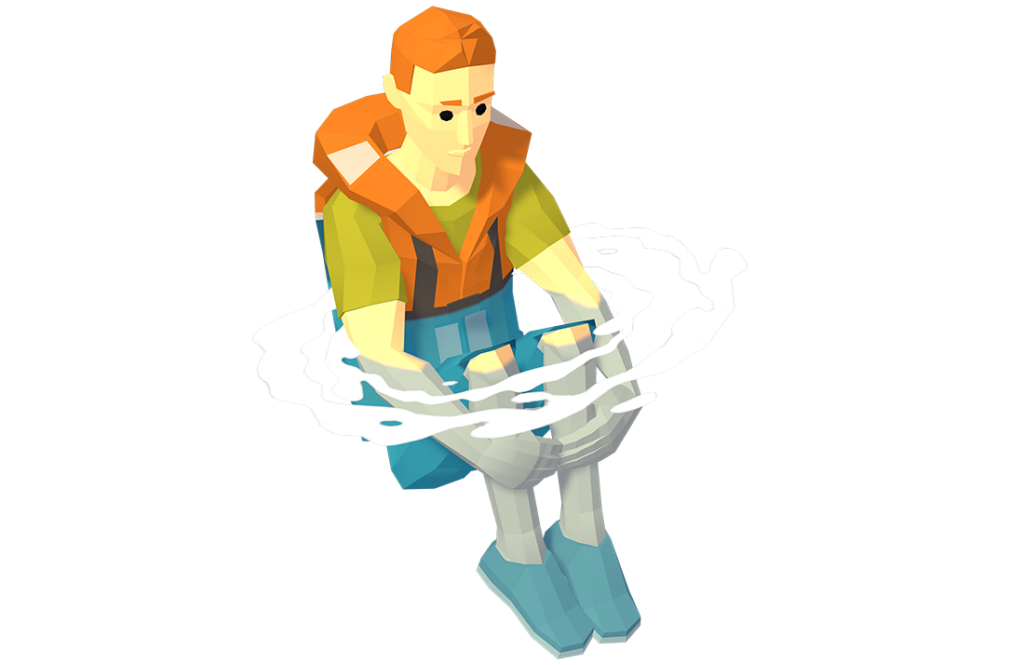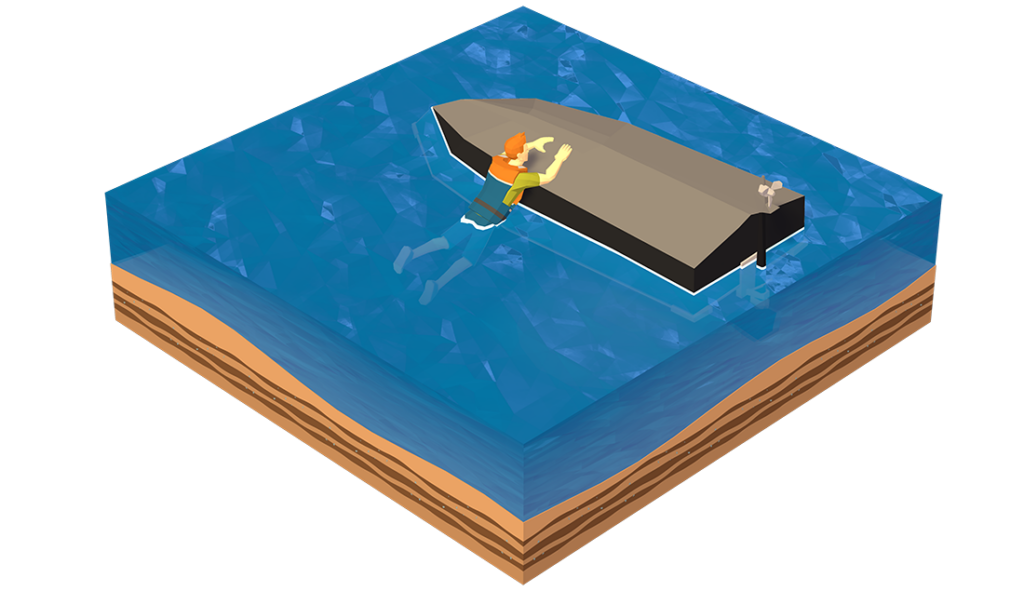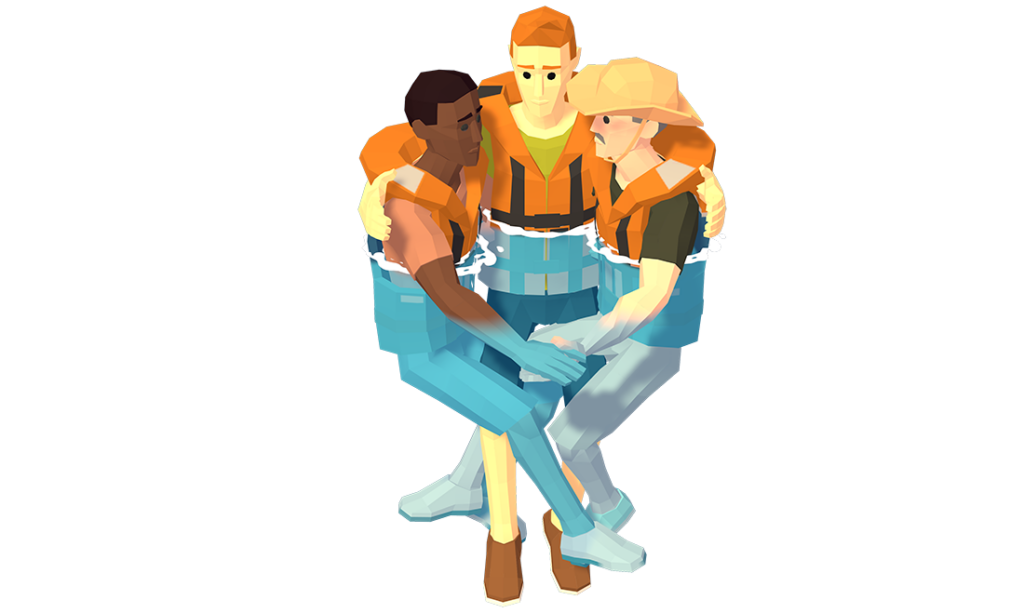In the unlikely event you end up in the water, always try to climb onto a nearby floating object, getting as much of your body out of the water as possible. If this is not possible, there are some positions that can help you to survive longer. If alone, adopt the “Heat Escape Lessening Position” (H.E.L.P.). This is done by crossing your arms tightly against your chest and by drawing your knees up close to your chest.
Groups should “huddle” together in a circle. Everyone should wrap their arms around each other’s mid to lower backs, making sure that the sides of their chests are as close together as possible. Everyone in the circle should then intertwine their legs for maximum warmth.
The following items may provide additional protection from hypothermia: Dry Suit, Wet Suit, Immersion Suit, Survival Suit, Exposure Coverall, multiple light layers of dry clothing, water or wind proof outer layer.
Capsizing, Swamping, Sinking and Grounding
In the unlikely event of capsizing, swamping, sinking or grounding, the operator of a boat should know what actions to take. First, anyone who is not already wearing a PFD and/or life jacket should put one on. Whenever possible, stay with the boat and account for all persons aboard. If necessary, use or exhibit signals to indicate distress and/or the need of assistance. Capsizing, swamping, sinking or grounding are all common causes of on-water incidents and fatalities.
Sunlight, Waves, Wind, and Sound
Everyone on board a boat should be aware that the motion of the boat, combined with the effects of sunlight, waves, wind, sound, and/or alcohol may reduce one’s ability to operate a boat properly. Such combinations can negatively affect people in terms of their balance, co-ordination, reflexes, judgement, response time, eyesight, and/or hearing. Fatigue is also a safety factor, especially when combined with these other situations. They can also lead to other conditions such as:
- Heat Stroke, with symptoms like high body temperature, rapid pulse or difficulty
- Exhaustion, with symptoms like stomach pain, fever, chest pain or
- Seasickness with symptoms like lethargy, drowsiness or
Any of these effects could lead to a greater risk of accidents and injuries and they should be watched for. If you suspect any of them, treat to prevent further deterioration, and seek help as needed. A proper first aid kit with treatment information should be on the boat.


